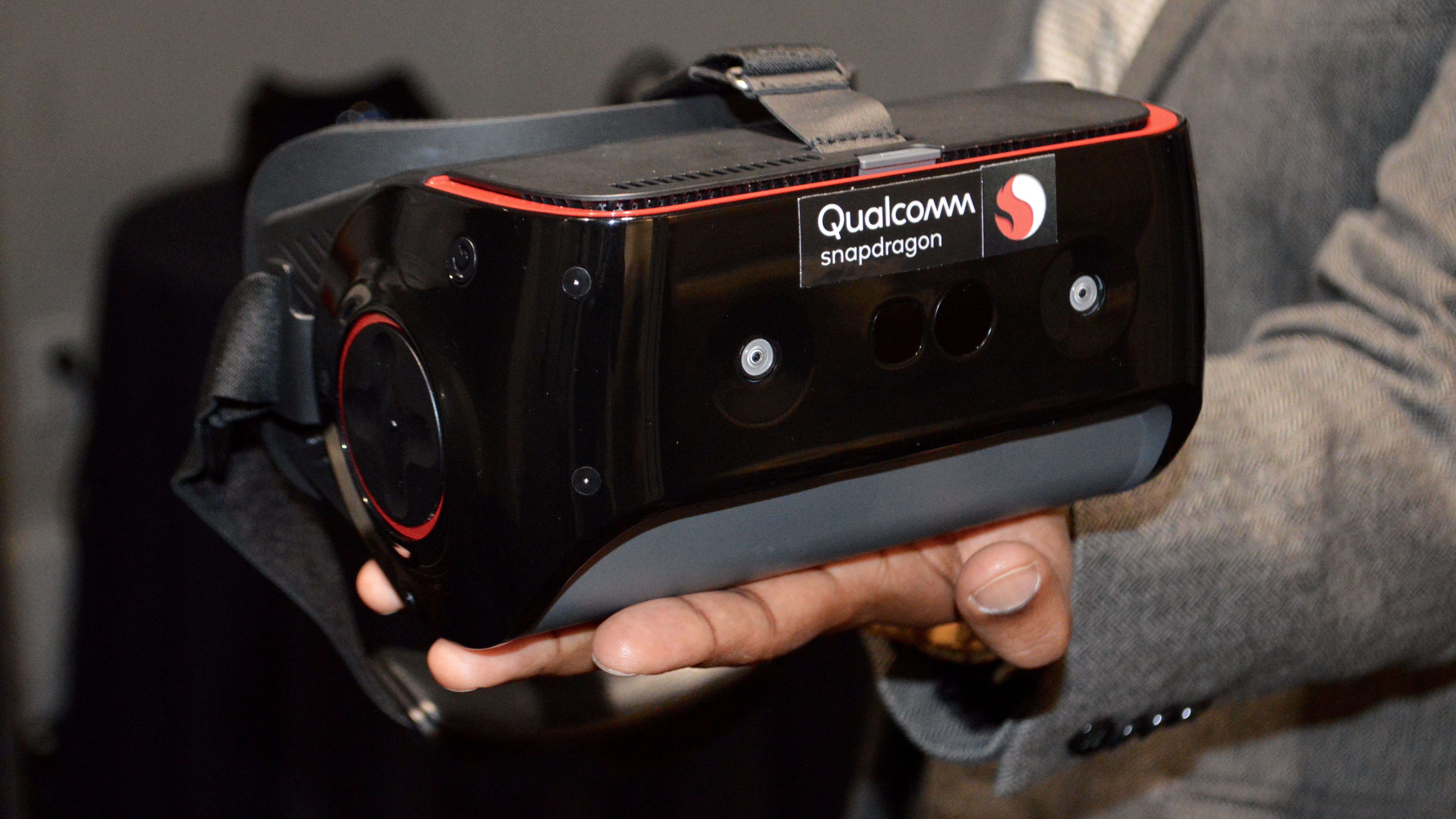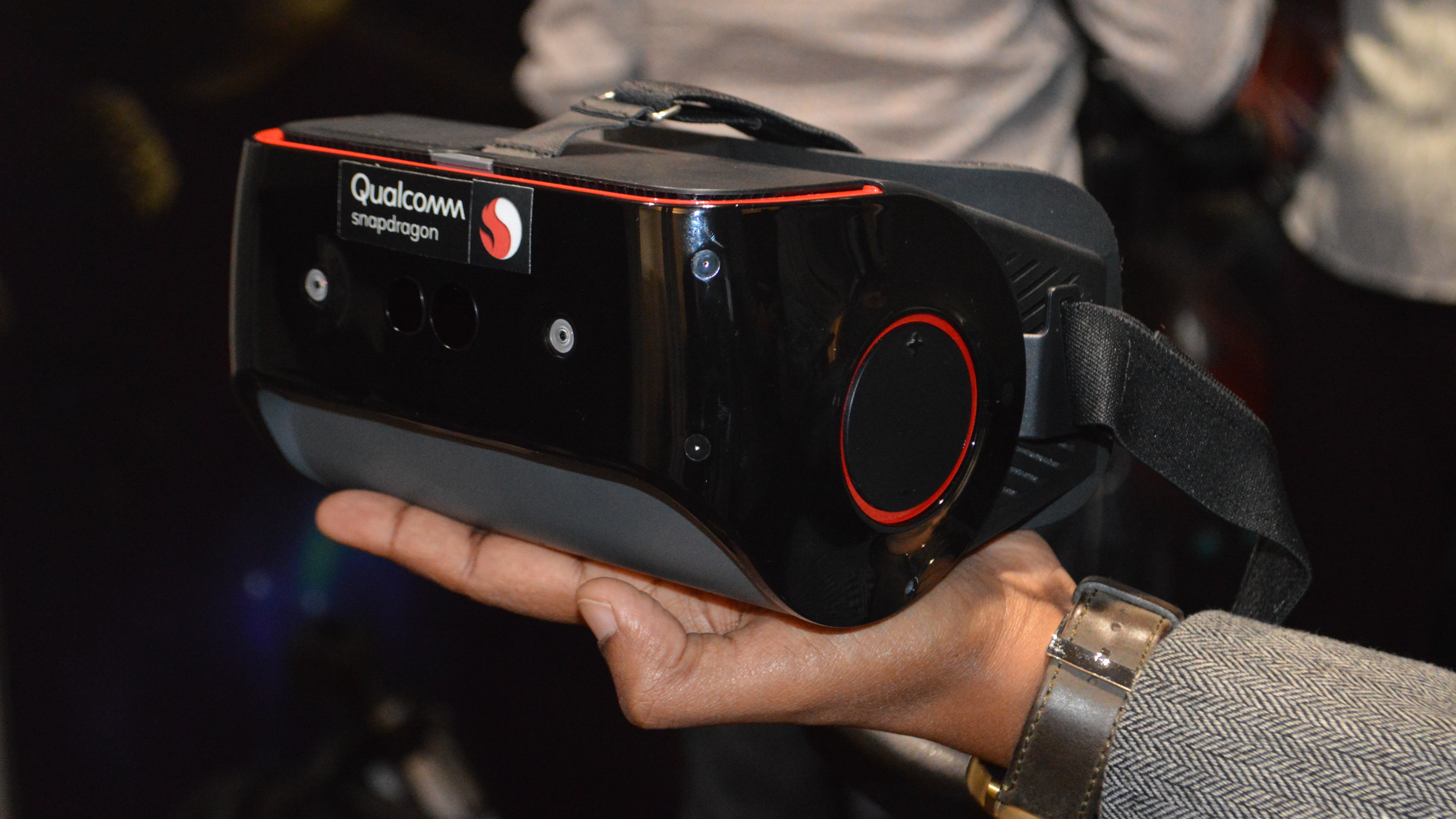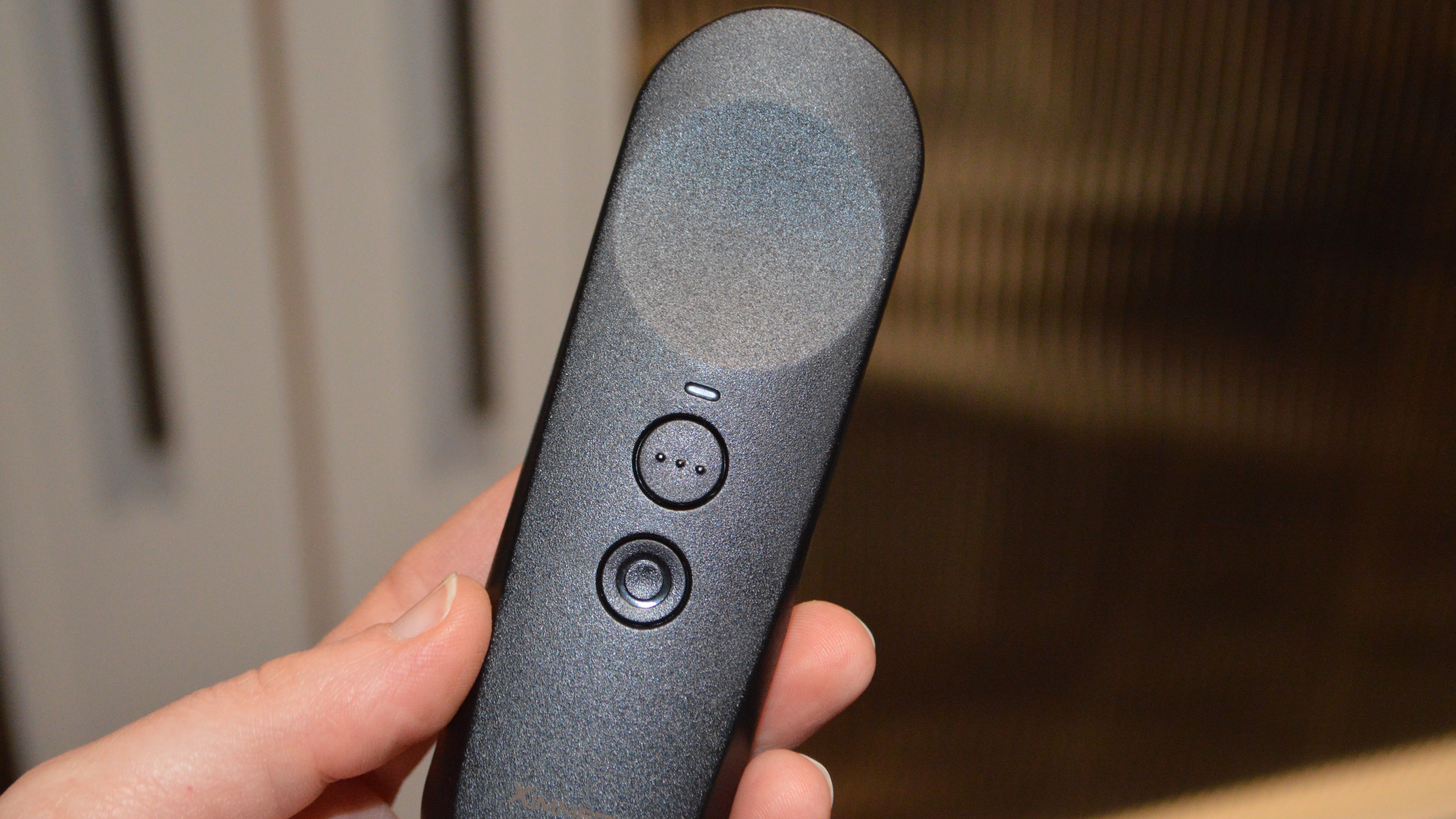Qualcomm's latest reference design headset takes standalone VR to the next level

Qualcomm thinks standalone virtual reality (VR) is the way of the future, and to help move that future along the chip maker is out with its second reference design headset on which partners like Google Daydream, HTC and Oculus will base their own devices.
The Snapdragon 845 VRDK ('DK' stands for developer kit) is the evolution of last year's Snapdragon 835 VRDK headset and includes both a new headset and an SDK for developers.
Qualcomm announced the Snapdragon 845 headset at MWC 2018 earlier this year, but further detailed the headset this week at GDC 2018 in San Francisco.
The hallmark features of the Snapdragon 845 VRDK are room-scale six-degree-of-freedom (6DoF) tracking, eye tracking powered by Tobii, Adreno Foveation, a new boundary system, and 6DoF controller support.
Catch all that? Let's break down the important parts.

Room-scale 6DoF tracking is the big new addition to the headset. Using a technique called SLAM, the Snapdragon 845 VRDK can map your environment in real-time, and even bring objects present in the physical world into the virtual one. For example, a table in front of you might be rendered as a rock in VR.
It's noteworthy that the Snapdragon 845 headset doesn't require external sensors, like the HTC Vive and Oculus Rift do, to provide information on where you're actually positioned in the world.
Sign up for breaking news, reviews, opinion, top tech deals, and more.
Qualcomm doesn't have any data yet as testing is still ongoing, but the company said that 6DoF room-scale tracking as utilized on the Snapdragon 845 VRDK leads to better accuracy and reduced drift, i.e. you won't be aimlessly wandering around your living room as much.
Implementing SLAM on the headset is possible thanks to a dedicated computational DSP (dedicated signal processor) in the Snapdragon 845, Qualcomm has previously explained.

Foveation isn't new for Qualcomm's reference designs. It essentially means the headset won't render everything in the experience at a high resolution. Instead, only what your eyes are looking at will be at peak resolution, with the edges slightly degraded.
This helps with power management, according to Qualcomm, which is further boosted thanks to the Adreno GPU platform.
Closely tied to foveation is eye tracking, another major addition in the Snapdragon 845 VRDK. Two internal cameras track your eye movements, allowing the device to know exactly what you're looking at in VR.
In addition to reducing the workload of rendering everything on the display at a high resolution, there are other eye tracking benefits to be had, Qualcomm said.
For one, it's another input method besides your hands and controller – you can quickly look at something and select it instead.
Eye tracking also allows for more social VR because it will help to mimic your actual expressions. Finally, Qualcomm suggested it will allow for better analytical data for developers, marketing, and advertising personnel because they can see heat maps of where users' eyes land during gameplay and app usage.

If environment, hand and eye tracking weren't enough, the Snapdragon 845 VRDK also supports 6DoF controllers.
Much like the Samsung Gear VR and Google Daydream View (2017) headsets, you can use a controller to make selections in VR. Oh, and shoot down buzzing wasp-like robots, as we did during our demo at GDC.
Qualcomm is introducing controller-agnostic APIs to support 6DoF tracking in addition to the 3DoF controller support already present in the Snapdragon 835 VRDK.
6DoF controllers lend even more accuracy, as we also found when using Oculus' Project Santa Cruz wireless headset last year.
As for when manufacturers and developers can get their hands on the Snapdragon 845 VRDK, Qualcomm expects both hardware and software to launch in Q2 2018.
Standalone gaining steam
In addition to its VRDK news, Qualcomm also announced support for the HTC Vive Wave VR SDK, an open platform to help developers make mobile VR content.
With the Snapdragon 845 VRDK, Qualcomm is setting the stage for what standalone VR will look like in the later part of 2018 and early 2019.
Headsets that don't require a smartphone or PC to run are popping up with more frequency, such as the HTC Vive Focus and Lenovo Mirage Solo (both of which run on Snapdragon).
For Qualcomm, the latest dev kit as well as the company's HMD Acceleration Program are aimed at providing manufacturers and developers with just about everything they need to create VR hardware, apps and games on their own. It's aim is to speed up standalone VR development, built on the Snapdragon platform.
So far, the industry seems to be responding positively to Qualcomm's strategy, and we expect more standalone Snapdragon headsets from the likes of HTC, Oculus and many others as the year marches on.
We're on the ground at the Game Developers Conference (GDC) in San Francisco this week covering the latest in gaming, from mobile and consoles to VR headsets. Catch up on all the latest from GDC 2018 so far!
- The best VR headsets on the planet!

Michelle was previously a news editor at TechRadar, leading consumer tech news and reviews. Michelle is now a Content Strategist at Facebook. A versatile, highly effective content writer and skilled editor with a keen eye for detail, Michelle is a collaborative problem solver and covered everything from smartwatches and microprocessors to VR and self-driving cars.